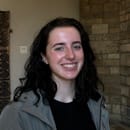Continuing with March’s Women’s Month, it is important to note the many famous and not-as-famous women in the STEM field. Only 28 percent of the STEM workforce is made up of women, with a low number of us entering these fields and more leaving it due to the issues we tend to face in male-dominated work culture. Although there are more efforts to include women over the decades, we cannot forget where we started. We may think there is a strong amount of bias today in the sciences, but I want to remind you of the women who came before us and what they dealt with, specifically Rosalind Franklin.
Born on July 25, 1920, to a Jewish family in London, England, Franklin was an intelligent child who knew from a young age that she wanted to be a scientist. This is evident as she did well in school, especially in the subject of science. She attended Newnham College in Cambridge to study chemistry and was granted today’s equivalent of a bachelor’s degree—Second Class Honors. As World War II progressed, she later worked as a research assistant at the British Coal Utilisation Research Association. There she studied coal, which benefitted her and the war effort as this study paved the way for her Ph.D. thesis.

Using X-ray diffraction, she and one of her students were able to take photos of DNA’s structure and noticed that there were two types: dry type A and wet type B DNA. One of her famous photographs was “Photograph 51” which presented the structure of DNA as it had never been seen before.
She laid the blueprint for the formation of DNA and even discovered its density. She was highly invested in her work and took care to keep it safe, but that didn’t stop her work from being stolen.
In 1953, her colleague Maurice Wilkins showed Photograph 51 to James Watson and Francis Crick, scientists who were trying to create a model of DNA. Using her photo, they were able to complete their model correctly and claim most of the credit for Franklin’s discovery. They published their work and in 1962 they received the Nobel Prize for it. Although Franklin was the pioneer for this scientific expedition, she didn’t gain her rightful recognition for it until many years later. Watson and Crick became more well-known for their “findings” after publishing three articles on it.

Her achievements throughout her studies allowed her to be recognized as a great scientist in the eyes of scientists today. Her work was stolen, and we must acknowledge that she was the founder of the structure of DNA. We cannot stand by or simply be assistants in the STEM fields; women must also take charge of our own scientific discoveries. Girls who excel at math and science at a young age must be nurtured and encouraged to continue these studies to close the gap in STEM. By putting them down we only feed the centuries-long ideas that women are inferior in these fields, which we know is not the case.
Sources: Biography and Britannica



